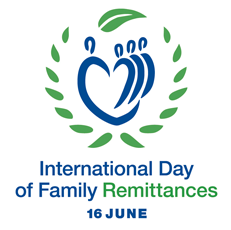Remittances: the hidden engine of globalisation With 270m migrants around the world, the money they send home now exceeds foreign direct investment Financial Times – London
Every month Joy Kyakwita presses a button on her phone and does something in common with millions of other people across the globe: she sends money home.
Ms Kyakwita, a London-based lawyer, gives a third of her salary to her family back home in Uganda, including paying money for school fees for her brothers and nephews.
“I believe that when you pay for them to go on a good course, then there is a good chance of them becoming employable,” she says. “And if they are employed then they will be able to help their siblings as well.”
Ms Kyakwita is just one of an estimated 270m migrants around the world who will send a combined $689bn back home this year, the World Bank estimates. That figure marks a landmark moment: this year remittances will overtake foreign direct investment as the biggest inflow of foreign capital to developing countries.
Remittances were once viewed by many economists as a secondary issue for developing economies behind FDI and equity investments. Yet because of their sheer volume and consistent and resilient nature, these flows are now “the most important game in town when it comes to financing development”, says Dilip Ratha, head of the World Bank’s global knowledge partnership on migration and development.
The number of people in the world who live outside the country of their birth has risen from 153m in 1990 to 270m last year according to the World Bank, swelling global remittance payments from a trickle to a flood. As migration has increased, these financial snail-trails have become one of the defining trends of the past quarter-century of globalisation – the private, informal, personal face of global capital flows.
For many developing economies, it is a lifeline.
“In times of economic downturn, natural disaster or political crisis, private capital tends to leave and even official aid is hard to administer,” says Mr Ratha. “Remittances are the first form of help to arrive, and they keep rising.”
Remittance inflows help boost countries’ balance of payments and therefore their credit ratings, lowering the borrowing costs of governments, companies and households. In the Philippines, for example, this year’s remittances inflows of $34bn will help reduce what would otherwise be a current account deficit of more than 10 per cent of gross domestic product to a deficit of just 1.5 per cent of GDP.
Remittances are “a relatively stable source of foreign currency in the current account, and that feeds directly into our sovereign ratings”, says James McCormack of Fitch Ratings. “In the case of a country like the Philippines, Egypt or Nigeria, their current account positions would be much weaker in the absence of remittance flows.”
Some governments have sought to channel remittances into development efforts; Indonesia is the latest country to consider a “diaspora bond” in a bid to tap the savings of its wealthier overseas residents.
But remittances have economic downsides too. By helping to subsidise low incomes at home they provide a cushion against the impact of slow growth, which eases pressure on governments to reform their policies.
And, by channelling capital into consumer spending, remittances boost imports – which, some economists say, holds back the development of domestic manufacturing.
“No country is ever going to get rich from remittances,” says Gareth Leather of Capital Economics, a consultancy. “I don’t think any government would want to get rid of them, but many would like to get to the point where they are no longer needed.”
Mr Ratha at the World Bank argues, however, that this understates the importance of remittances. “Is consumption bad?” he asks. “Not really. Without it we’d be dead. Investment can wait, consumption can’t.” As incomes rise, he added, people put money into housing, health and education. “This is human capital formation. That’s a great investment in any economy.”
Remittances are also one of the key transmission mechanisms of global economic stress. People move in search of opportunities, so emigration rises when an economy is doing badly. When their host country is doing well and migrants prosper, they send more money home – a countercyclical boost to the struggling economy at home.
But when host countries hit hard times, the shock is transmitted back to migrants’ families in the form of lower remittances. This can export the slowdown to the recipient country, fuelling economic instability on a global scale.
One example is the recent fall in oil prices. It was a blow not only to oil producing countries but also to families across south-east Asia and elsewhere who have breadwinners working in the Gulf.
It proved to be a structural shock for Lebanon, a small economy in which families and the banking system are heavily dependent on inflows from the diaspora.
“We’ve been watching Lebanon closely because remittances have really declined in the past decade, by almost 12 per cent of GDP,” says Frank Gill of S&P Global, one of the big three rating agencies. “This is a key source of funding for the public sector and it’s a major worry for a rating agency, for obvious reasons.”
In May S&P lowered its outlook for Lebanon’s sovereign rating to negative, citing slowing inflows from non-residents as a threat to the country’s fiscal stability.
Although remittances have become one of the chief characteristics of the current era of globalisation, political shifts including the rise of populism raise the question of whether their economic importance will prove short-lived.
The backlash against globalisation is growing and anti-immigration sentiment is rising in many developed countries. So it is possible that both migration and the capital flows that it drives could begin to ebb.
But the World Bank expects 550m people to join the workforces of low and middle-income countries between now and 2030. And the gaping income disparity between developed and low-income countries – $43,000 a year per capita in the former, and $800 a year in the latter – is set to persist.
That means job opportunities abroad will continue to look attractive.
“The structural trends in the world are towards more migration, not less,” says Mr Leather.
And the push from poor countries will be met by a pull from rich ones.
“The western world is ageing, and it’s going to be increasingly reliant on imported labour,” says S&P’s Mr Gill. “I don’t see why that isn’t going to continue.”
Meanwhile, other flows of capital into developing economies are becoming less reliable. FDI, traditionally a key driver of development, is in retreat. Outward FDI from the five principal global sources in recent years – the US, China, Germany, Japan and the UK – fell by two thirds between 2017 and 2018, according to OECD data.
And as a global economic slowdown looms on the horizon, speculative investment flows are also likely to become more volatile.
That leaves the cobweb of remittance flows around the world as one of the main systems by which global capital circulates. And even if migration tails off, the high existing stock of migrants around the world means those flows are likely to continue for decades to come.
In Southall, the west London district where she lives, Joy Kyakwita has no plans to move back to Uganda. “Now I’m not thinking about that, because I have a big dream in this country,” she says. “I have children who were born here.”
She studied and qualified as a lawyer thanks to financial help from her sister, who came to the UK to work as a nurse. Now she wants to pass that good fortune on to the next generation of her family.
Returning home, she says, has become “no longer about me, but also about my children as well … I would rather support [my wider family] from here”.


